Abstract
A simplified, indirect radioimmunoassay is described for Escherichia coli, vaccinia virus, and herpesvirus. The antigens were affixed to glass cover slips; thus both the primary and secondary reactions take place on the cover slips, and the unbound antiserum is easily separated from the bound antiserum by rinsing. Rabbit or human immune sera were reacted with the antigens, and the primary immune complex was quantitated by a secondary reaction with 125I-indicator globulin (anti-rabbit or anti-human). A direct relationship between the antiserum concentration and the 125I absorption was established. Variations in titers were detectable, and the titers were comparable to complement fixation titers. Homologous and heterologous reactions were distinguishable. The method affords an objective, quantitative, and qualitative evaluation of antibody, and results are reproducible.
Full text
PDF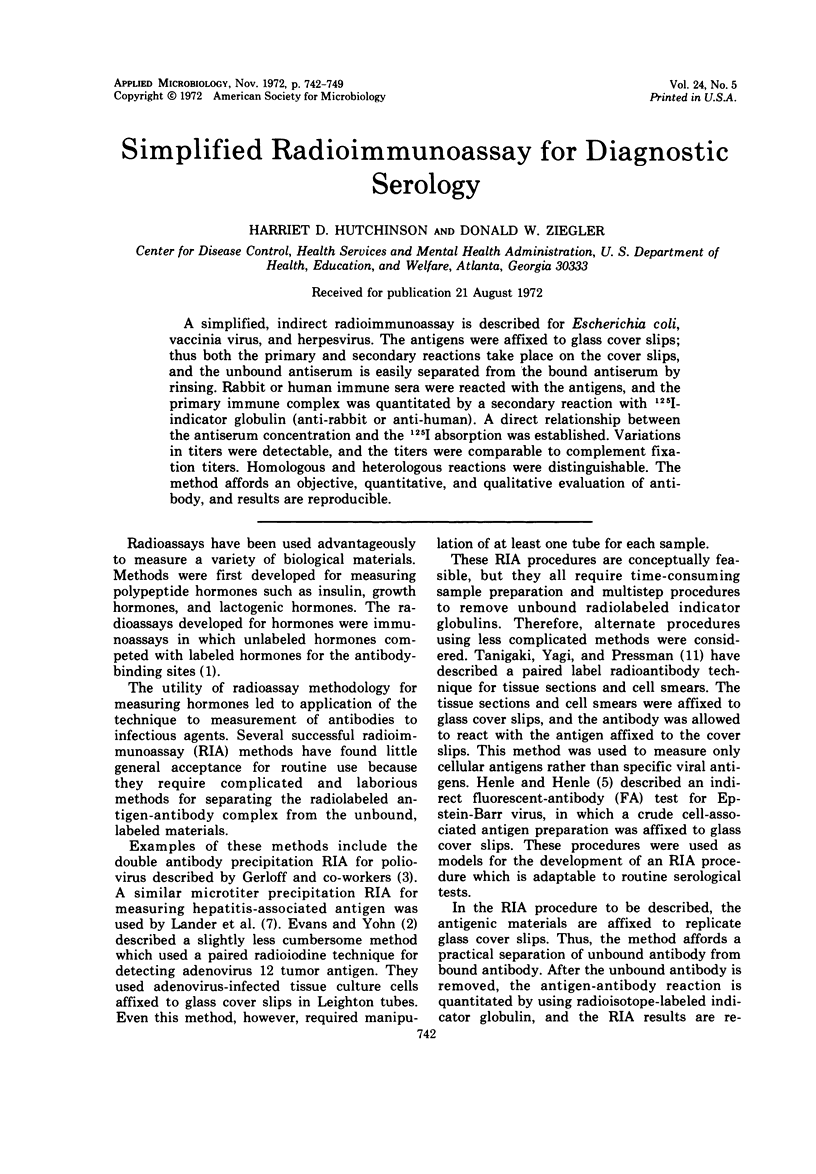
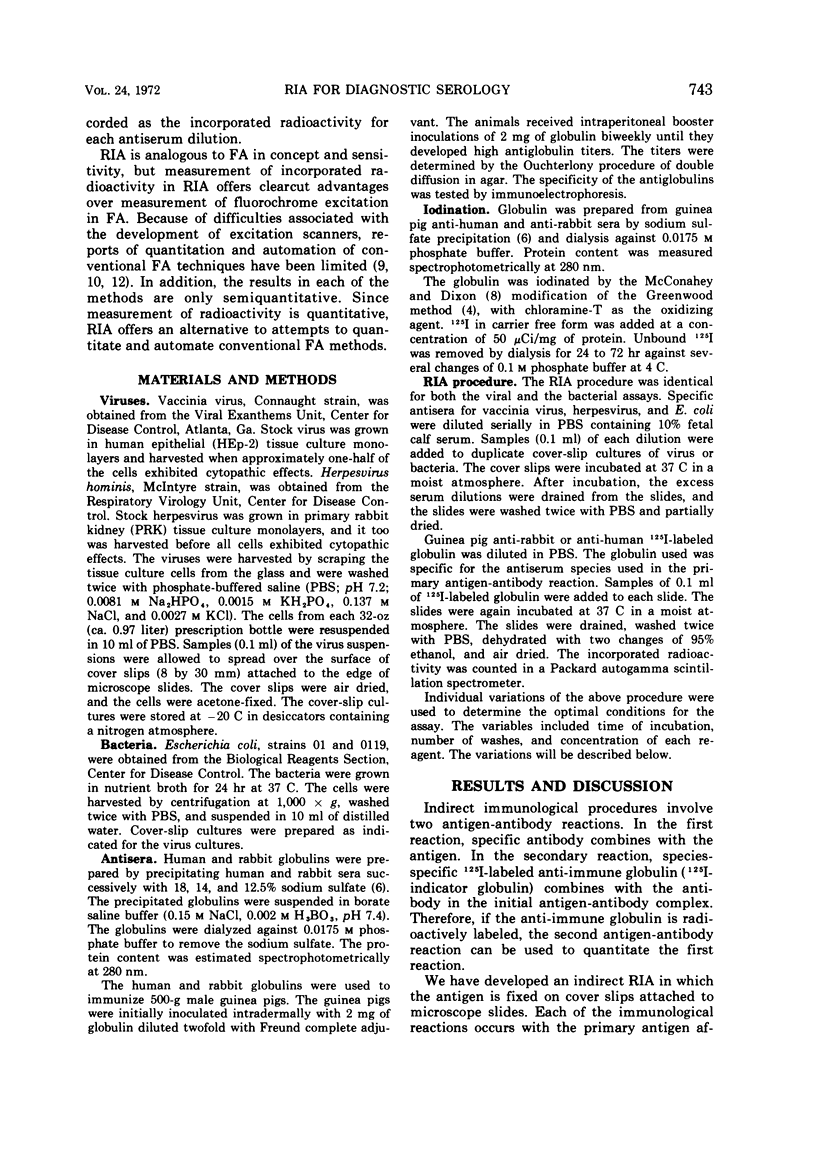
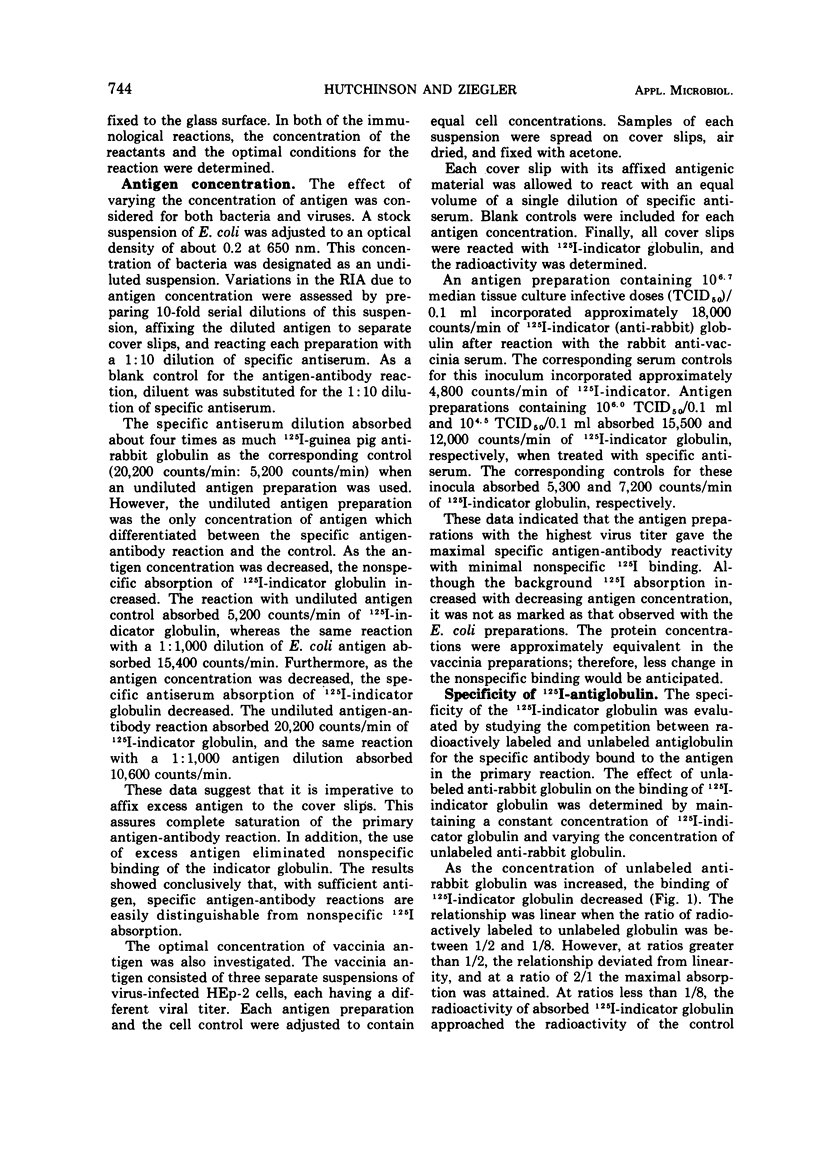
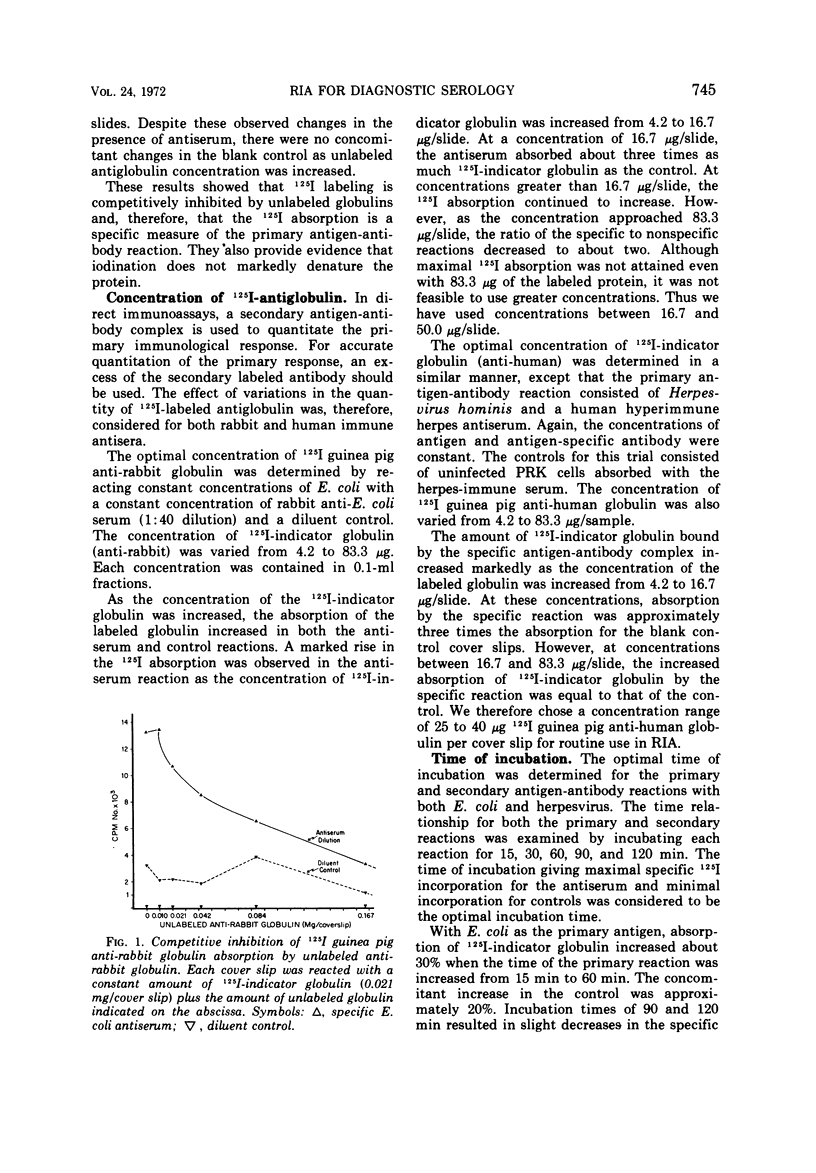
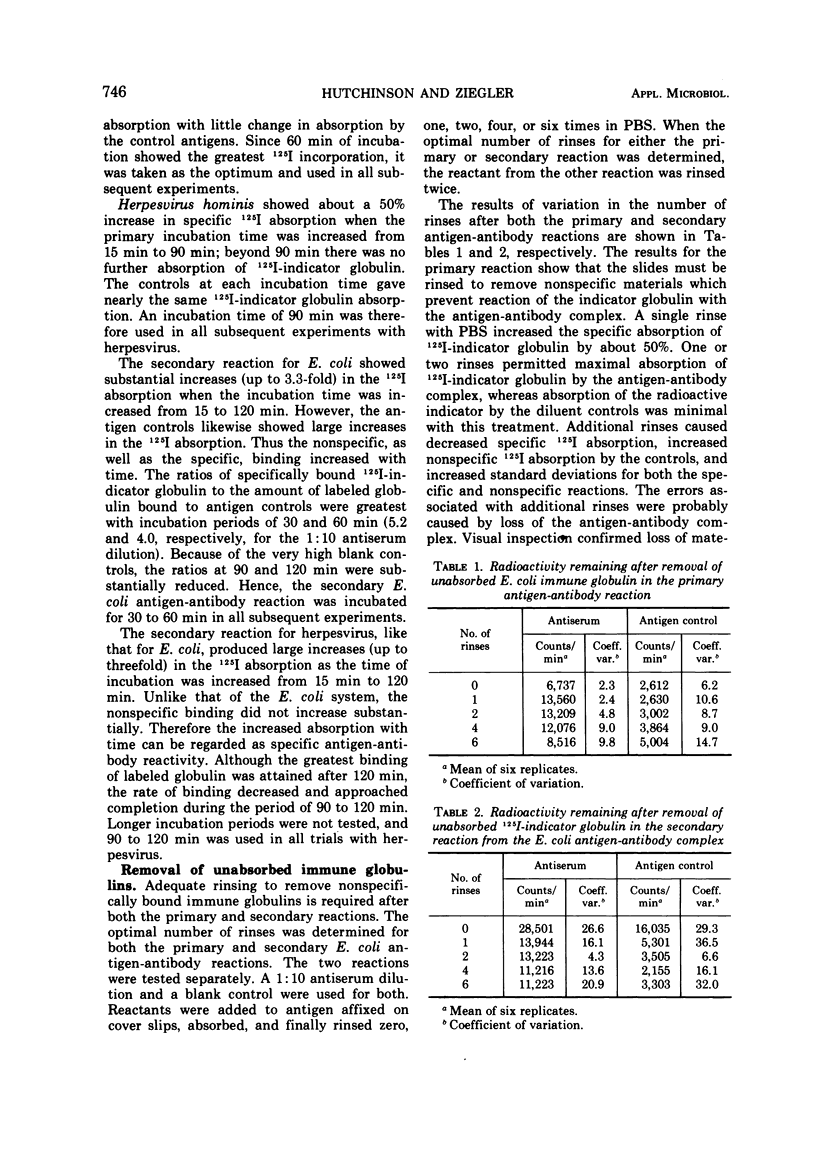


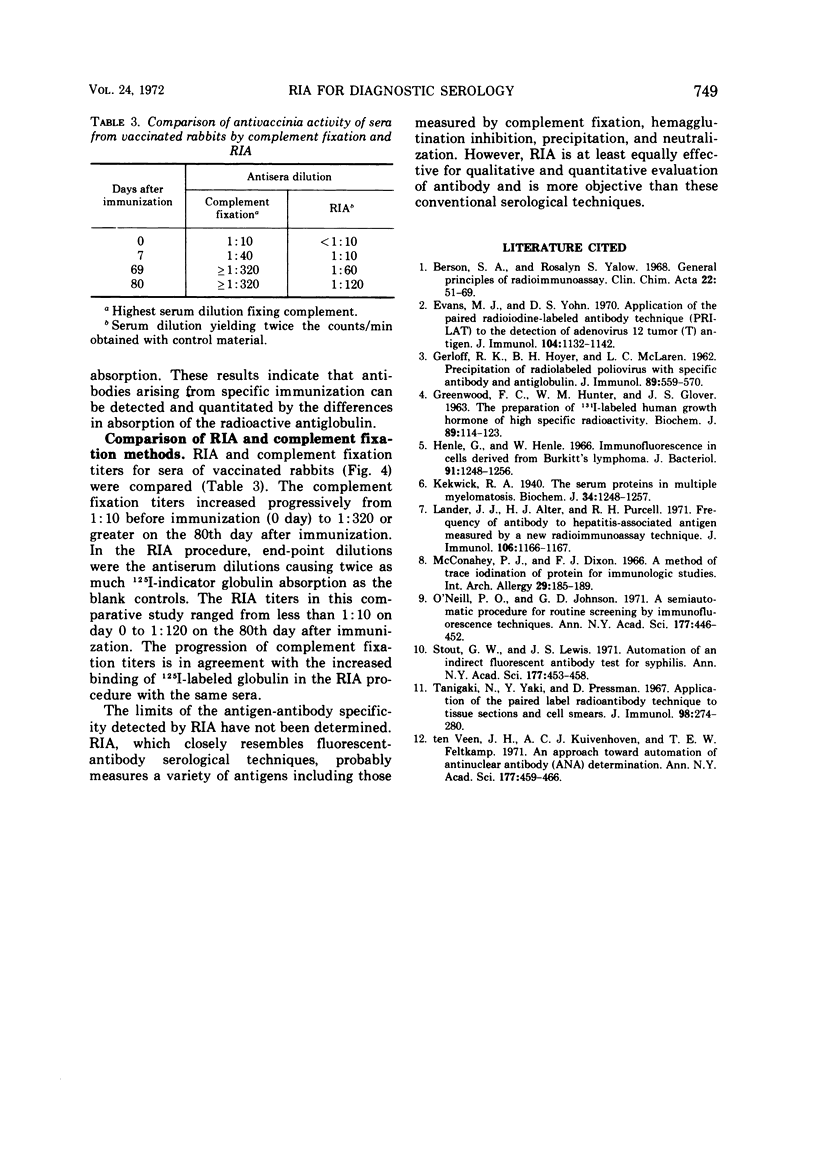
Selected References
These references are in PubMed. This may not be the complete list of references from this article.
- Berson S. A., Yalow R. S. General principles of radioimmunoassay. Clin Chim Acta. 1968 Sep;22(1):51–69. doi: 10.1016/0009-8981(68)90247-7. [DOI] [PubMed] [Google Scholar]
- Evans M. J., Yohn D. S. Application of the paired radioiodine-labeled antibody technique (PRILAT) to the detection of adenovirus 12 tumor (T) antigen. J Immunol. 1970 May;104(5):1132–1142. [PubMed] [Google Scholar]
- GERLOFF R. K., HOYER B. H., McLAREN L. C. Precipitation of radiolabeled poliovirus with specific antibody and antiglobulin. J Immunol. 1962 Oct;89:559–570. [PubMed] [Google Scholar]
- GREENWOOD F. C., HUNTER W. M., GLOVER J. S. THE PREPARATION OF I-131-LABELLED HUMAN GROWTH HORMONE OF HIGH SPECIFIC RADIOACTIVITY. Biochem J. 1963 Oct;89:114–123. doi: 10.1042/bj0890114. [DOI] [PMC free article] [PubMed] [Google Scholar]
- Henle G., Henle W. Immunofluorescence in cells derived from Burkitt's lymphoma. J Bacteriol. 1966 Mar;91(3):1248–1256. doi: 10.1128/jb.91.3.1248-1256.1966. [DOI] [PMC free article] [PubMed] [Google Scholar]
- Kekwick R. A. The serum proteins in multiple myelomatosis. Biochem J. 1940 Sep;34(8-9):1248–1257. doi: 10.1042/bj0341248. [DOI] [PMC free article] [PubMed] [Google Scholar]
- Lander J. J., Alter H. J., Purcell R. H. Frequency of antibody to hepatitis-associated antigen as measured by a new radioimmunoassay technique. J Immunol. 1971 May;106(5):1166–1171. [PubMed] [Google Scholar]
- McConahey P. J., Dixon F. J. A method of trace iodination of proteins for immunologic studies. Int Arch Allergy Appl Immunol. 1966;29(2):185–189. doi: 10.1159/000229699. [DOI] [PubMed] [Google Scholar]
- O'Neill P., Johnson G. D. A semiautomatic procedure for routine screening by immunofluorescence techniques. Ann N Y Acad Sci. 1971 Jun 21;177:446–452. doi: 10.1111/j.1749-6632.1971.tb35074.x. [DOI] [PubMed] [Google Scholar]
- Stout G. W., Lewis J. S. Automation of an indirect fluorescent antibody test for syphilis. Ann N Y Acad Sci. 1971 Jun 21;177:453–458. doi: 10.1111/j.1749-6632.1971.tb35075.x. [DOI] [PubMed] [Google Scholar]
- Tanigaki N., Yagi Y., Pressman D. Application of the paired label radioantibody technique to tissue sections and cell smears. J Immunol. 1967 Feb;98(2):274–280. [PubMed] [Google Scholar]
- ten Veen J. H., Kuivenhoven A. C., Feltkamp T. E. An approach toward automation of antinuclear antibody (ANA) determination. Ann N Y Acad Sci. 1971 Jun 21;177:459–466. doi: 10.1111/j.1749-6632.1971.tb35076.x. [DOI] [PubMed] [Google Scholar]


